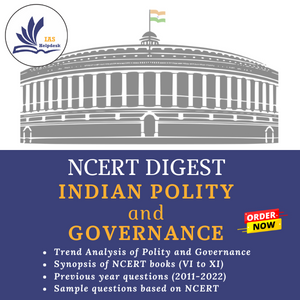E-Courts Integrated Mission Mode Project
Description
E-Courts Integrated Mission Mode Project
The Government has launched the E-Courts Integrated Mission Mode Project for the computerization of District and subordinate courts with the objective of improving access to justice using technology. As part of the National e-Governance Plan, the project has been under implementation since 2007 for ICT development of the Indian Judiciary based on the “National Policy and Action Plan for Implementation of Information and Communication Technology in the Indian Judiciary”.
E-Courts project, a centrally sponsored scheme, is being implemented by the Department of Justice, Ministry of Law & Justice in association with the e-Committee Supreme Court of India Department of Justice in a decentralized manner through the respective High Courts. This initiative aims to enhance judicial productivity, making the justice delivery system accessible, cost-effective, reliable, and transparent.
The project envisages:
• To provide efficient & time-bound citizen centric services delivery as detailed in eCourt Project Litigant’s Charter.
• To develop, install & implement decision support systems in courts.
• To automate the processes to provide transparency in accessibility of information to its stakeholders.
• To enhance judicial productivity, both qualitatively & quantitatively, to make the justice delivery system affordable, accessible, cost effective, predictable, reliable and transparent.
Initiatives Taken Under E-Courts Project
• National Judicial Data Grid NJDG (District and Taluka Courts of India) contains data of 13.23 Cr cases (pending and disposed) ensuring statistical inputs to higher authorities for making policy decisions to reduce delay and arrears. Case Information System (CIS) has automated processes like filing, scrutiny, registration, listing, court proceedings, disposal and notice generation.
• ePayment service streamlined payment of court fees, fine, penalty and judicial deposits. ePayment portal is integrated with state specific treasury portals like GRAS, eGRAS, JeGRAS, Himkosh, Rajkosh, SBI ePay etc.
• National Service and Tracking of Electronic Process (NSTEP) provides electronic mechanism to bailiff by providing PDAs for speedy, transparent and timely delivery of process.
• Virtual Courts reduce footfalls in the courts by eliminating the physical presence of violator or advocate in the court thereby saving the precious judicial time. A virtual court can be managed by a judge whose jurisdiction can be extended to the entire state and working hours may be 24X7.
• eChallans submitted in the court are automatically filed to the virtual court for adjudication. eFiling provides a platform to advocates and litigants to file their cases online before High Courts and District Courts.
• Live Streaming of court proceedings has been started in High Courts of Gujarat, Gauhati, Orissa, Karnataka, Jharkhand, Patna, Madhya Pradesh & Hon’ble Supreme Court of India thus allowing media and other interested persons to join the proceedings.
• In addition to eSewa Kendras, as part of the DISHA (Designing Innovative Solutions for Holistic Access to Justice) scheme the Government of India has launched Tele Law program since 2017, which provides an effective and reliable e-interface platform connecting the needy and disadvantaged sections seeking legal advice and consultation with panel lawyers via video conferencing, telephone and chat facilities available at the Common Service Centres (CSCs) situated in Gram Panchayat and through Tele-Law mobile App.

